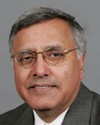Good day. Bonjour. My name is Alistair Macintyre. I'm the officer responsible for oversight of all RCMP criminal operations in British Columbia.
Violence characterizes the nature of organized crime in British Columbia. In 2008, 40%--or 55--of the province's 138 murders were organized crime and gang related. The costs are staggering.
The prevalence of violent crime, up to and including murder, occurring as a consequence of organized criminal activity is a major public concern. The people are scared. While British Columbia homicide rates are stable, the proportion of those attributed to organized crime is increasing. There's also evidence suggesting that the number of non-fatal shootings has increased, perhaps because of the increased gangster use of body and vehicle armour.
It is estimated that there are approximately 133 organized crime groups in British Columbia. While the estimated number of groups seems to have remained stable over the past four years, the exact number of individuals involved is yet unknown and difficult to accurately predict.
Organized crime and gangs have multi-jurisdictional connections. In addition to their drug trafficking practices, which are national and international, they hire shooters from other jurisdictions, which thwarts homicide investigations.
While organized crime groups and gangs were at one time characterized by their ethnic origin, there are growing trends towards emerging polyethnic groups organized around a criminal market. Their structures are flexible, their skills diverse and sophisticated, while their knowledge about how to defeat the criminal laws is escalating. Emerging groups are also less inclined than their predecessors to blatantly display the trappings or signs of their branding, as more traditional gangs like the Hells Angels would, such as using a name, tattoos, clothing, and jewellery as identifiers. This makes prosecution under organized crime laws more difficult.
The examples of Project EPARAGON typify the gangster groups, those who import and export multi-kilograms of cocaine and other drugs and launder millions of dollars of their proceeds of crime, often at casinos. These groups import precursors, manufacture illicit drugs, then export the products to a different country. They also import cocaine from Los Angeles, then export the same drugs to Australia to maximize profit.
Organized crime is becoming more sophisticated, as seen in their use of technology, and there has been a noted trend for them to relocate production facilities to rural areas to avoid detection by law enforcement. Gangs and organized crime are showing a strong presence in Prince George and Kelowna, as evidenced by the Hells Angels' establishing chapters in these two major centres, as well as by Red Scorpions' and Independent Soldiers' presence in Kelowna, as confirmed by a recent shooting.
Other outlying areas in British Columbia, such as Fort St. John, have also reported increases in gang-related violence, frequency, and intensity. The Lower Mainland of British Columbia has recently experienced an increase in gang violence that has previously been described as a “spike in violence”, a “crisis”, and a “public security threat”. It has attracted considerable media attention, and there is increased public concern over the violence and the fact that the recent high-profile incidents have occurred in public places, particularly shopping mall parking lots.
The violence is not restricted to a particular community within the Lower Mainland, but has been witnessed in both Vancouver and the suburban cities. The jurisdictions in which this violence has occurred are policed by either RCMP contract detachments or stand-alone municipal departments. The overall police response is managed via the integrated gang task force or IGTF, the integrated homicide investigation team or IHIT, and the Vancouver homicide squad. Many other agencies routinely assist. The two integrated units are composed of police officers from many jurisdictions, but are led by the RCMP.
Organized crime in the Lower Mainland can best be described as a pyramid, with the street gangs at the low end and sophisticated international, multi-commodity Asian organized crime and outlaw motorcycle gangs at the apex. Typically, street gang enforcement is handled at the local level, and high-end organized crime is investigated by the Combined Forces Special Enforcement Unit, which you will hear from shortly.
The crime that has been of the greatest concern in recent days is that of the mid-band. The mid-band of organized crime is primarily focused on the drug offences and is very territorial. Gangs argue over territory, alliances are much less permanent today, and there's a fundamental lack of respect amongst these gangsters, both within their respective gangs and towards other gangs. This results from increased police enforcement and the issues of supply and demand.
There are also strong standing personal rivalries and jealousies amongst the gangsters. In recent months the Bacon brothers' gang has obtained wide news coverage. The Bacons have a family residence in Abbotsford and an apartment in Port Moody—I should say “had”. Those cities, with their own police departments, have become focal points for much media attention and the public advisories to avoid the Bacons and their associates. The Bacon brothers are associated with the Red Scorpions, who are in conflict with the United Nations Gang.
Although mid-level gang activity used to be ethnically based, it is now multi-ethnic, with family and school ties being secondary. The number of gangs in the mid-band has increased rapidly over the past few years due to the lucrative drug trade. It has become more violent due to the easy access to new and modified firearms from Asia and the United States.
A spate of recent murders and shootings in the Lower Mainland, i.e. 10 in 10 days, really raised public concern. Many of the shootings have occurred near a freeway, allowing for easy access and egress.
The gang task force and other units generally know the players in the gangs, yet procuring the necessary evidence in determining who in the gang was the shooter tends to be very difficult. Various legislative and legal obstacles make the investigation of these crimes more difficult and onerous. Search warrant and electronic eavesdropping requirements and pretrial disclosure tactics are prominent among these. I know you've heard much about that already.
The prevalence of modified armoured vehicles and gangsters wearing bulletproof vests increases the risk to police officers. Police concern has also been raised by homicides involving innocent victims: two within the Surrey six massacre of 2007, one in Richmond, and one in Burnaby.
The integrated homicide team had its busiest year last year, recording 57 homicides in its jurisdiction. This does not include the cities of Vancouver, West Vancouver, and Delta. The next highest year was 2005, when there were 48 homicides. The homicide rate in Greater Vancouver exceeds that of Toronto and other major urban cities.
Approximately 40% of IHIT's--that's the homicide team--homicide investigation relate to organized crime. Some are high-profile gangsters in the mid-band, but many are functionaries in the drug gangs, such as crack shack reloaders and dial-a-dope runners.
In an effort to stem the growth of gang violence, the Province of British Columbia announced a host of initiatives. The initiatives include the assignment of PORF--that is, the police officers recruitment funding--obtained from the federal government to fight against organized crime; taking provincial action through increased organized crime prosecutors; and civil forfeiture and seeking action from the federal government in terms of amendments to the Criminal Code respecting gun violence, crime paraphernalia, evidentiary obstacles to prosecution, and sentencing.
The gang task force and the integrated homicide investigation team and numerous other RCMP and municipal units are working very hard to stem the violence on the streets. Many initiatives have borne fruit over the past year, including a uniformed gang squad for the Lower Mainland and increased resources. The current level of killings is unprecedented, however, and is taxing the skilled resources required to conduct these investigations.
The trend in spiking gang violence continues today. The first three months of 2009 continues to show an increase in gang violence. Homicides in the region are forecast to exceed last year's record numbers if continued at the current pace. When they are forecast, we can multiply by four to get approximately the annual projection of 52 gang murders this year in the metro area, within the 136 of the total for the province.
In the 2009 provincial statistics to the first three months of this year, 13 homicide victims were from organized crime activity; 8 were without organized crime activity; and for 13, we're still trying to figure where they fit.
Through an intelligence-gathering process, police have identified and are now targeting the groups seen as being involved in the highest level of gang violence in the region. Some successes have been seen, and more will follow.
Most of the gang violence seen today in the Lower Mainland is directly linked to the control of drug lines. Some of the examples and patterns seen are retaliation for taking over a territory or street-level drug lines in the region; continual hunting behaviour of key gang members by rival gang members. This hunting is done with well-armed and experienced gang members, some of whom travel from other areas of the country. Other factors are internal conflict arising from the lack of profit being generated through the respective lines, the inability to pay debts, or the increased tax placed on individuals controlling drug lines for the various gangs by the upper-level gang members. This tax can come from the drug supply organized crime group as well.
There are also some ethnic-driven rivalries between gangs in some pockets of the region, and marijuana grow rips or other drug rips. Some known targets have made this behaviour their only source of income. They routinely carry rip kits made up of such things as firearms; body armour; balaclavas and bear spray; knives; conducted-energy weapon devices, or tasers; duct tape; and zap straps to conduct their activity.
Another aspect is lists of named individuals--contracted violence against those who gang members identify as interfering with their criminal activities, who may be killed in the near future.
The challenge that police face is often the sheer volume of gang activity that occurs in the region at any given point in time. There have been an estimated 600 confirmed incidents of shots fired in the Lower Mainland area of British Columbia since January 1, 2006. Each of these shots-fired complaints reflect a conflict that is the cause of the incident.
The police have been successful in investigating some gang activity. However, success has come at the cost of a significant drain in resources and time. All the while, other gang members flourish due to their rivals being targeted by the police.
Since 1995, well over 150 investigations have been identified that have involved a wide range of offences committed by organized criminal entities and/or gang members. These investigations have targeted, arrested, and charged members and associates of the Hells Angels, the United Nations Gang, the Red Scorpions, and the Independent Soldiers, as well as Asian, Indo-Canadian, Middle Eastern, Eastern European, Hispanic, and independent organized crime groups. Many have resulted in significant seizures of illegal commodities, specifically marijuana, cocaine, illicit synthetic drugs and the chemical precursors used to manufacture them, heroin, and firearms. In addition, several investigations have resulted in the seizure and restraint of cash and other monetary instruments, real property, or other articles deemed to have been derived from the proceeds of crime.
A comprehensive review of over 50 of those investigations resulted in identification of 153 persons who have successfully been prosecuted and convicted in British Columbia. An additional 120 persons are awaiting an upcoming trial, or indicted, convicted in foreign jurisdictions, primarily the U.S.A.
The integrated gang task force, the Combined Forces Special Enforcement Unit, the integrated homicide investigation team, and other numerous RCMP and municipal police units continue to work hard to stem the violence in the street. This collaborative and inclusive partnership will continue to result in investigative successes. Police anticipate a decrease in the levels of violence only after sustained pressure by law enforcement, prosecutor services, the judicial system, and community support. A failure of any one component will result in a collapse of the entire effort.
Thank you.











